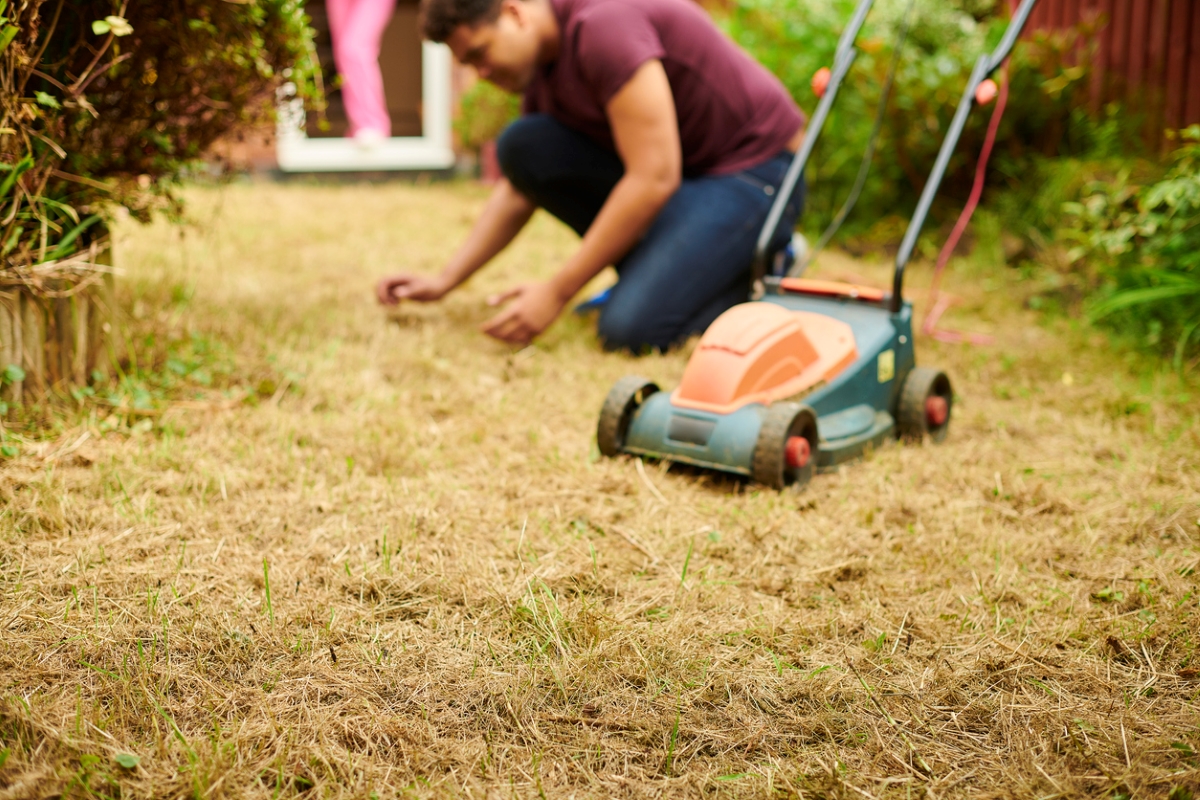We may earn revenue from the products available on this page and participate in affiliate programs. Learn More ›
Many homeowners strive for a picture-perfect green lawn, free of weeds, bare spots, brown spots, or any impediment to playing an exhilarating round of croquet. But if the grass is greener on someone else’s lawn, it may be time for some serious turf talk to determine what the problem is on your side of the fence.
While some unsightly problems can be blamed on Mother Nature and her minions (insects and rodents, mostly), other problems are self-induced. Overeager gardeners may be applying too much water or fertilizer, or not enough.
Research by EPA partner WaterSense estimates that lawn irrigation accounts for nearly one-third of all residential water use, equaling roughly 9 billion gallons per day. If your lawn fails to show signs of improvement despite watering, it probably means you’re ineffectively using water, ultimately leading to wastage.
Below, find our expert-backed solutions for common lawn problems, whether it’s tackling stubborn weeks or reviving dry patches from drought.
1. Brown Spots
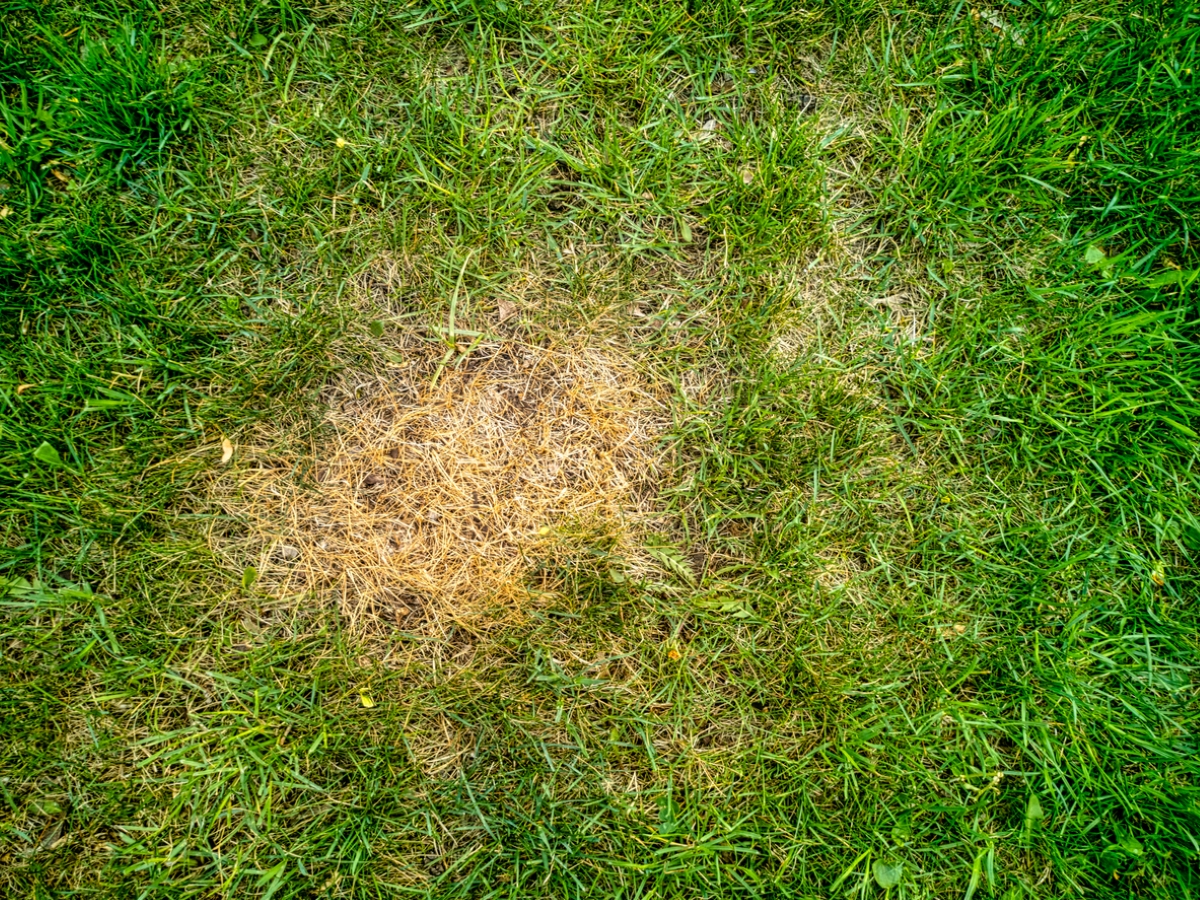
Brown spots can be caused by a seemingly endless list of things: grubs eating grass roots, fungus (Rhizoctonia) attacking during late summer’s hot, humid days, thatch from the decaying organic material caught between grass blades and the roots, dull mower blades damaging grass, over-fertilizing, poor soil, or dog urine. “Identifying the cause involves inspecting the spot’s characteristics: for instance, if it’s a circular patch that expands over time, it’s likely a fungal issue,” says Tony O’Neill, gardening guru and founder of Simplify Gardening.
The fix: To correct the issue, use a grub killer, dethatch, sharpen your mower blades, follow the directions for the right fertilizer. Take Fido to a different spot to do his business and then repair by scratching up the dead grass and applying gypsum to neutralize the salts. Reseed the area, covering the grass seed with fresh soil.
2. Weeds

No matter how attentive you are to your yard, weeds will occasionally crop up. The most common are dandelions, clover, and crabgrass. Invasive weeds like creeping Charlie and broadleaf plantain can crowd out grass. “The best method for controlling them without harming the grass involves maintaining lawn health through proper mowing, watering, and fertilizing practices,” O’Neill advises.
The fix: If weeds are new and small, you can pull them by hand. If they’re established with a long tap root, you may have to dig them, boil them, or use either an environmentally friendly weed control method or an herbicide.
3. Mushrooms
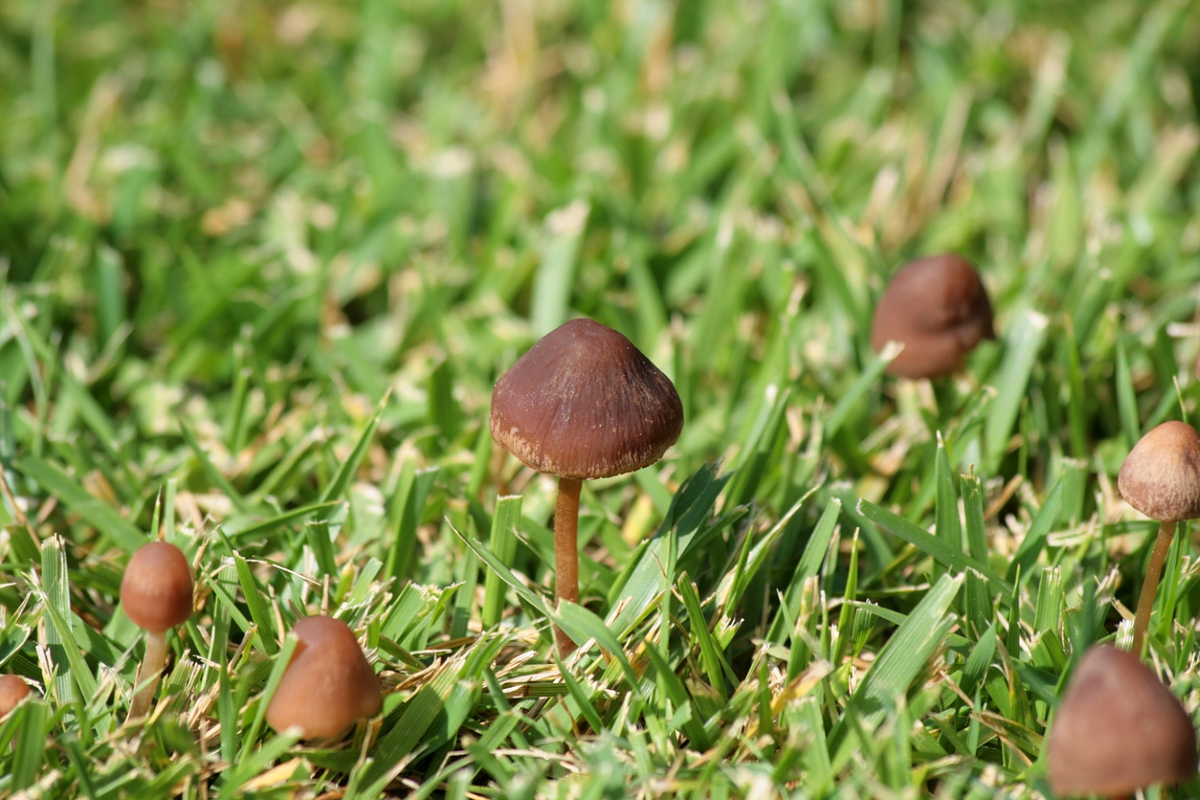
“Mushrooms typically grow in lawns due to excess moisture and organic matter, such as decaying roots or mulch,” O’Neill says. Although many homeowners don’t like them, lawn mushrooms aren’t bad for your lawn—they break down organic material in the soil. Pulling them doesn’t make them go away. You’ll probably need a lawn fungicide.
The fix: To prevent fungus, water your lawn early in the morning, replace old mulch, keep mower blades sharp, and don’t mow too low. Dethatching and aerating the lawn can also help.
4. Thatch
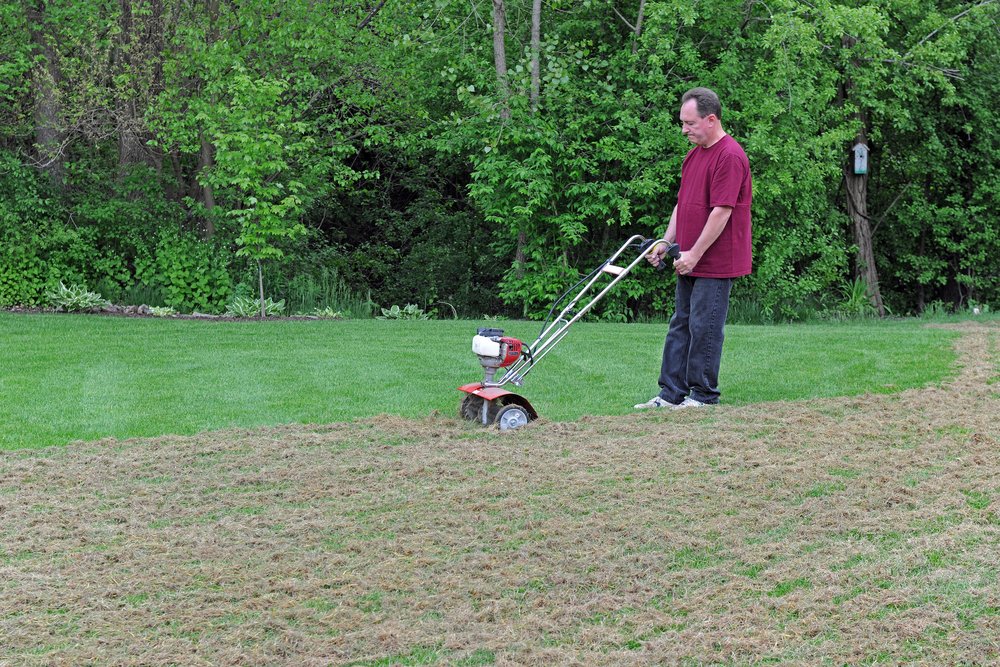
Thatch is a brown spot resulting from the buildup of grass and decaying organic matter that suffocates the roots of grass. Ironically, it occurs more frequently in well-cared-for lawns than neglected lawns and can result from the use of chemicals, which inhibit the natural decaying process.
The fix: Dethatch the lawn with a rake or power dethatcher. Aerating your lawn can help reduce thick thatch.
5. Drought
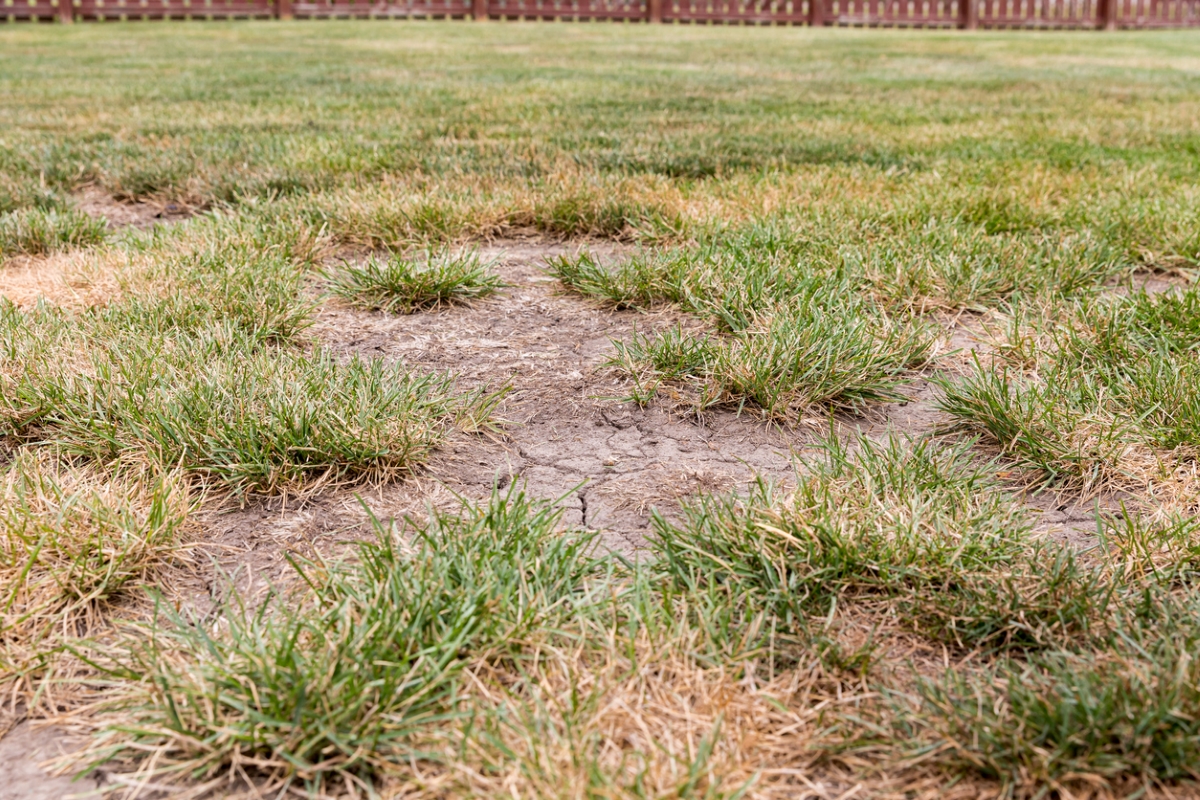
During the dog days of summer when little rain falls, lawns can go dormant and turn yellow. If you don’t want to wait for the rainy season and cooler temperatures to bring it back to life, you can water a drought-stressed lawn, but do so sparingly.
The fix: Deep, infrequent watering is the way to go. One inch of water per week encourages deep roots. Raising the height of the mower deck will also encourage root growth. Stop fertilizing while the grass is dormant.
6. Bare Spots

Like brown spots, bare spots in a lawn can have a number of causes: heavy foot traffic, grubs, pet urine, poor soil, fungus, buried rocks, turf disease, or chemical/fertilizer/gasoline spills. Depending on the cause, you may need to flush the area with water before overseeding it.
The fix: Scratch up the exposed soil, spread grass seed, and cover with fresh dirt. If you have Kentucky bluegrass or Bermuda grass, the surrounding grass may send runners to fill in the gap.
7. Lawn Rust
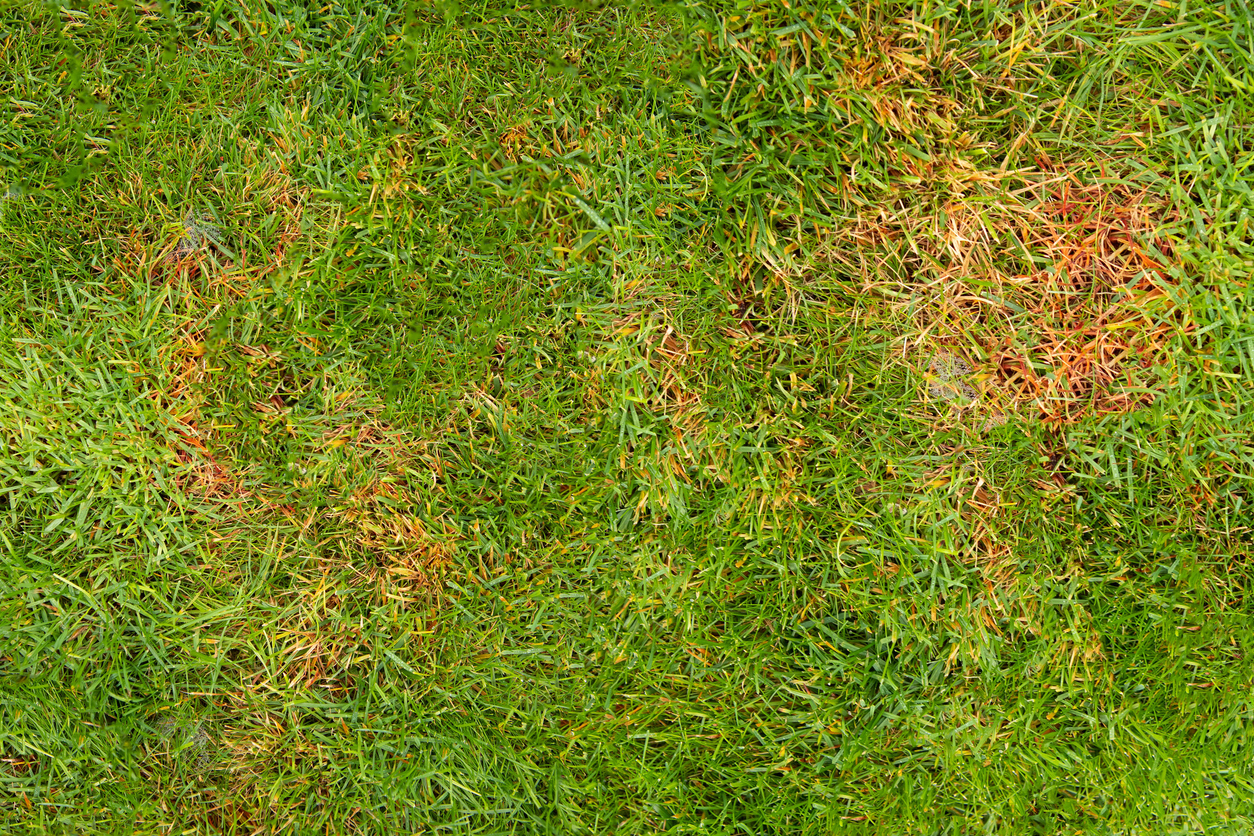
Lawn rust is a common disease that impacts residential lawns, particularly during the warm and humid months. It looks like orange or yellowish-brown patches on grass, like your lawn is rusting. It’s often caused by low nitrogen levels or excessive moisture, and can cause extensive damage if it’s left untreated, because it weakens the grass over time.
The fix: To prevent rust, fertilize the lawn with a nitrogen-based fertilizer that will boost the grass’s health and resilience. If the infestation is severe, fungicides specifically designed to target lawn rust may be the best option to eradicate the problem and restore the lawn’s vitality.

